How to create a blog: the ultimate step by step guide
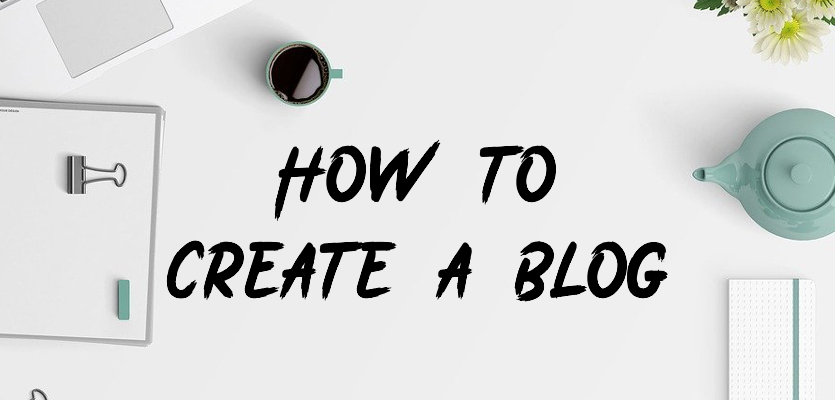
The team here at Website Builder Ninja has lots of experience building blogs and writing blog content. So, we sat down together to brainstorm how we could break down all the information needed to create a successful blog. This step by step guide is suitable for complete beginners or for anyone who has a blog and is looking to find best practices and useful tips to help them optimize.
We’re going to talk through why you should start a blog, how to start a blog, and something everybody wants to know, how to monetize a blog. We know that when you’re first starting out, creating a blog can seem overwhelming. We’ve compiled our years of experience into this useful step-by-step guide so you don’t have to make the same mistakes we all did when we first launched our blogs.
What is a blog?

A blog is a regularly updated web page that hosts a series of content, articles, or blog posts that are usually centered around a niche topic or theme. Blog content usually includes text, images, videos, and animated gifs. The content can literally be about anything. So, you could be a marine biology expert looking to share your experience with an audience or you could really like cats and decide to create a blog dedicated to sharing cute cat pictures. Trust me when I say that the cute cat pics idea has been exhausted, so you might want to think of something else…
Blogs are created for many reasons, but ultimately they help individuals and businesses develop an online audience, attract new leads, and grow an online presence or brand awareness. When done correctly, they can be an effective method of driving traffic to your website.
Why should you start a blog?

You don’t need to be a great writer or an expert in a particular field to start a blog. You just need to be passionate about your subject, business, or lifestyle and be able to offer an interesting or new perspective on that topic. Often the most popular blogs are written in a very informal, easy, conversational style that’s fun to read. The aim of the game for any blog is to attract an audience, so making it enjoyable to read is often the best strategy.
You might already know why you want to start a blog. However, if you’re unsure whether you should take the plunge, we’ve pulled together a shortlist of blogging benefits and reasons why you should start blogging today.
- Additional income – it’s possible to turn a blog into a lucrative business with blogs like the Huffington Post turning over $500 million every year from their viral content. While it’s not possible for everyone to generate half a billion from blogging, the average blogger in the US earns $13.33 per hour and lots of bloggers manage to earn a six-figure salary from their content. So, it can be a lucrative side hustle or full-time job if you work hard.
- Build a portfolio – blogs can also be used as a stepping stone into other careers. As a writer just starting out, the quickest way to success is getting some work published so people know your name. Creating your own blog or writing for someone else’s blog is a great way to get noticed and to start building a portfolio of work. Gary Vaynerchuk, Tim Ferris, and Michelle Malkin all started as bloggers.
- Share your story – whether you want to share your daily diary with friends and family or tell your message to the world, a blog gives you a platform to do so. You can create a voice for yourself and articulate your unique perspective to the world to help, inform, or support others. Or you can keep your Grandma in the loop about what you’re having for breakfast each morning during your semester abroad. Whatever you feel like writing about, you can!
- Promote your business – if you run a business, blogs can be a great way to promote and grow it. Hubspot reported that businesses that focus on blogging are 13x more likely to see positive ROI. When done correctly a blog will benefit your SEO and help you to start growing an organic traffic stream to your website. The best thing is that blog visitors will be relevant to your business and much more likely to convert into customers because they’re interested in the topics you write about.
- Start a passionate community – something unique to blogging that you won’t get from launching a regular website is feedback from your audience. The nature of blogs invites readers to engage with your content in the comments section. It gives you the chance to keep in contact with friends and families or learn from the people you are writing for.
How to create a blog in 6 easy to follow steps
I hope you’re feeling in the mood to blog now that you know the variety of benefits you can tap into. So, now it’s time to get into the detail of how you actually go about creating a blog. Whether you’re creating a blog for yourself or your business, the fundamentals are the same. In this list we’re assuming that you already know what you’re going to write about, so make sure you have a topic in mind before starting this checklist.
1. Choose your blog name & purchase a domain name
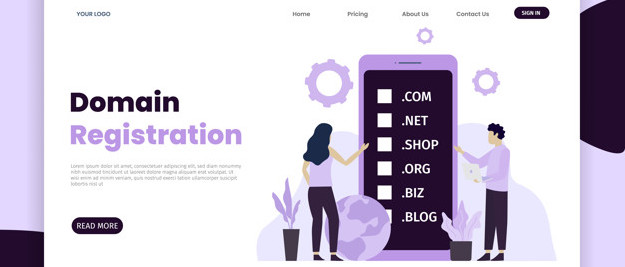
Naming your blog
The first thing you’ll need to do is pick a name for your blog. Although it might be tempting to rush this step, it’s worth taking some time to get it right because you’ll want to include the name in your domain name, and changing your domain name once you’ve created a website and you have established backlinks is a big no-no. It can do damage to your SEO and brand awareness so it’s best just to get it right the first time around.
A great blog name will do the following things:
- Signpost to your reader what the blog is about by including the topic you’re writing about in the name. For example, a food blog could be called ‘Eating Addict’ or ‘The Art of Cooking’ or ‘Cook, Drink, Eat’. These titles clearly signify that the content on this blog is centered around food, making it easy for the reader to understand what they are clicking on.
- Include a target keyword in the name to help with SEO if you can. It’s not essential but if you can make a keyword you know you want to target sound good, then it can benefit you down the line.
- Be simple and memorable – don’t get too complex because you want your blog name to be easy to remember. Try keeping your name to two or three words and avoid complex words that are hard to read and say.
If you’re struggling to think of blog names, you can use one of many free blog name generators like this one from Wix to give you some ideas.
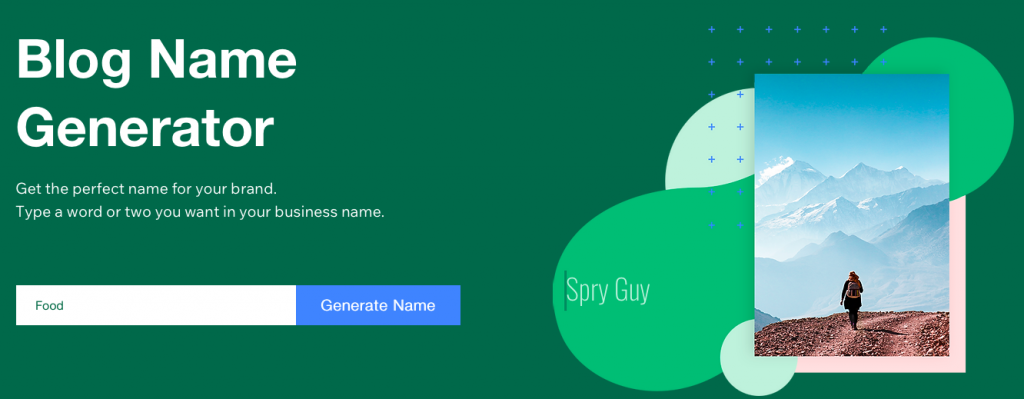
Choosing a domain name
Before you get too excited, make sure that the blog name you decide on has an available domain name. There are lots of options when it comes to deciding on the ending for your domain name. However, best practice dictates that ideally, you want a domain name with a .com or .net ending. This is because consumers trust .com and .net sites the most from years of surfing the web. So, they are most likely to click on those types of domain names. However, if high website traffic is not your main aim then you can have some fun with domain names that end in things like .pizza, .sexy, or .LOL.
If you’re using a website builder then you can usually purchase your domain name during the sign-up process and pay for it in the same bill as your first subscription. However, if you’re going to build a WordPress site or use a website builder that requires you to purchase a domain name somewhere else, try sites like Dreamhost or Bluehost to register your domain name.
2. Choose a website builder that suits you
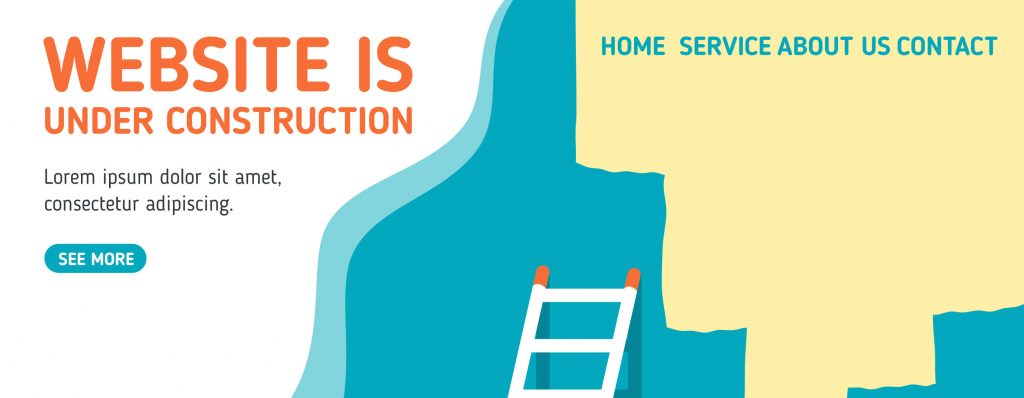
I won’t go into too much detail here because the best thing to do would be to check out our list of the best website builders for bloggers page. We’ve tried and tested the best website builders and ranked them based on how good they are for creating and managing a blog. There’s a detailed review of each brand for you to find out more information on any platforms you are considering. The top two brands in our best for bloggers list are Wix and Squarespace, here’s how they compare:

Wix
Read Full Review- Beginner Friendly8.7
- Design Capabilities9.9
- Variety of Features9.7
- Value for Money9.5

Squarespace
Read Full Review- Beginner Friendly8.9
- Design Capabilities9.6
- Variety of Features9.2
- Value for Money9.3
Things you should look out for when deciding on a website builder to create a blog:
- A platform that’s easy to use with no design or coding knowledge required to get started
- Professionally designed, good-looking web templates
- A large variety of content blocks to help you build a stunning blog with great features
- The ability to sync with social media channels
- An integrated email marketing solution or the ability to link up to a third-party solution
- SEO tools – at the very minimum you want the ability to edit headings (H1-H6), meta-descriptions, URLs and to be able to create sitemaps so your site can be indexed by search engines.
- Try and find a builder with fast loading times as this helps your SEO too (Webnode has the fastest loading times out of all the website builders). However, whichever website builder you choose there are lots of ways you can optimize your site for faster loading times like compressing image files, using AMP (accelerated mobile pages), reducing the size of pages and much more.
- If you plan on launching a personal blog, make sure it’s affordable. If you’re not trying to build a huge audience a cheaper plan from one of the cheaper brands will be more than enough
3. Decide on a web template and build your blog
A web template is great for speeding up the process of creating your blog. Most website builders will have a blogging category on their web template listings page. So, the best thing is to head there and pick the template that suits your blog the best. Make sure you list the features you need before you get to this stage so you can find the template with everything you need. For example, if you’re going to start a blog to talk about your photography business, make sure you pick a theme with great image galleries.
Make sure that your web template is mobile responsive to cater to mobile readers too. Most templates are automatically mobile-friendly, but it’s worth double-checking to make sure.
Here’s an example of a lifestyle blog template from Wix:

Here’s an example of a food and travel template from Squarespace:
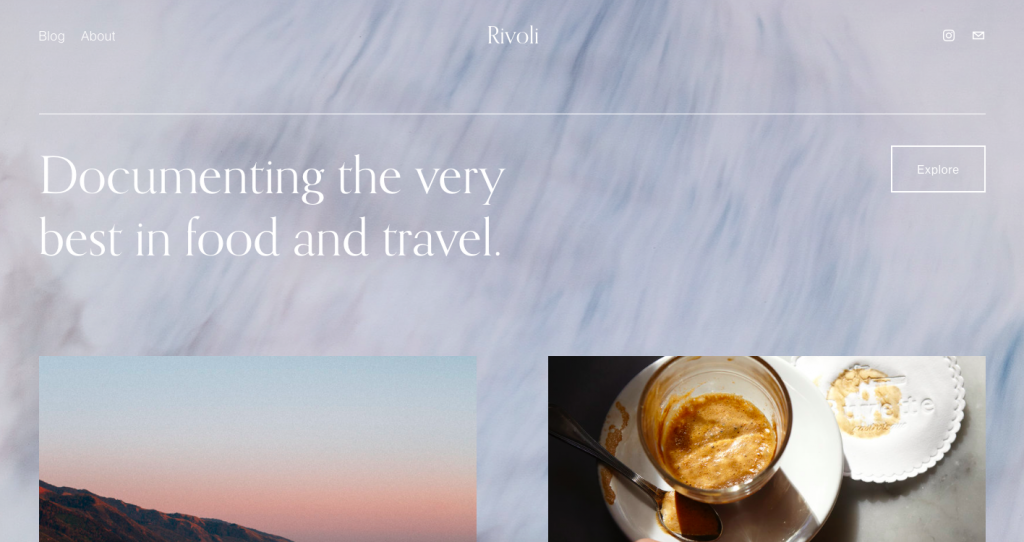
Once you’ve decided on your template then it’s down to you to populate the pages with your images and text to get your site ready for your first blog post.
4. Write and publish your first post

So, you’ve chosen a blog name, a website builder, a web template and you’ve populated it with images and text. It’s now time for the fun part, it’s time to start blogging! Your content is what will generate your audience, provide you or your business with a platform, and give you opportunities to monetize. Great content will vary depending on your niche. Some niches require highly researched scientific articles, whereas others demand picture focused posts with very little text. Whatever your content strategy, great blogs will keep the following things in mind when writing content:
- Speak to a specific audience and provide them with significant value. You could be helping your audience to grow their business, sharing personal experiences to comfort them, or keeping them informed with breaking news from within a certain industry. The best blogs communicate unique or new information that helps their audience in some way. If you really want to create a successful blog, think about your audience before yourself. What do they want?
- Make your content accessible and good-looking by taking time to format correctly, find great images, and write great text. This includes everything from spell checking, sourcing high-resolution images, and making sure that the spacing is right on your web pages so that the text is easier to read. The aim of the game is to make your content attractive to readers so that they want to engage with it and come back for more.
- Have some fun with it and don’t become too serious. Even if you’re writing on a serious topic or there’s money involved, it’s important to make sure it’s entertaining to read. The best way to do this is to write in a conversational tone. You’re not submitting blog posts to get graded, you’re sharing it with people reading in their leisure time. So, write as you speak and you’ll find it easy to create engaging content.
5. Think about SEO
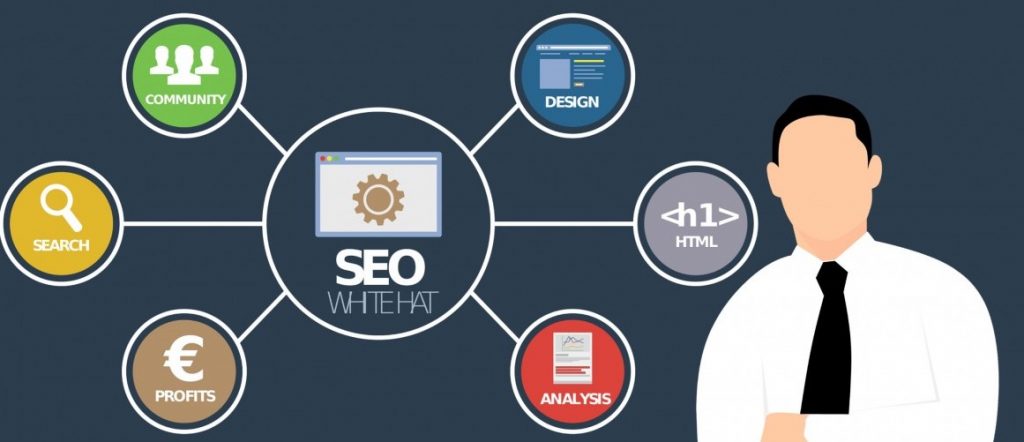
If you want to monetize your blog at any point, you’ll want to brush up on your SEO skills before you get started. This way, you’ll begin to make SEO gains the moment you launch your blog. You’ll thank yourself later! A good place to start would be to read our post, SEO & website builders – everything you need to know for a detailed rundown of what you need to think about. However, if you haven’t got time to read another article right now, no problem. We’ll go over the basics now:
- Keyword research – this helps you to find actual search terms that people use to find information about your topic on the internet. Search engines will trawl pages for keywords to judge whether that page is relevant to show in the search results. Pages with the keywords in the right places are much more likely to show up higher on the results pages. Knowing the keywords you want to show up for will help you to create content based on what your audience is actually looking for.
- On-page SEO – help search engines to understand if your page is relevant or useful to your audience and will help it to judge if your content is of high quality. On-page SEO includes things like header tags (H1-H6), rich content (images and videos), internal & external links, titles & meta-descriptions, friendly URLs, and image optimization.
- Off-page SEO – the main part of off-page SEO is backlinks. A backlink is an inbound hyperlink from another site to your site. A backlink from a respected site within your niche industry will signify to search engines that your web page must be important and relevant. Quality backlinks will boost your website authority and help you to show up higher in the search results, as well as providing another traffic stream to your site.
6. Promote your blog and grow your audience

Okay, so, unfortunately, you won’t get a ton of traffic as soon as you hit publish on your first blog post. The internet makes you work hard for web visitors and you will need to spend some time promoting your blog to get visitors, especially when your first start out. Here are a few things you can do to starting building an audience:
- Tell your friends and family about your new blog. This is a great way to guarantee your first few visitors and as long as you ask nicely, they will probably share it with their own networks which will immediately expand your reach. Friends and family are also the perfect people to help you spot any typos or areas for improvement before you promote it any further.
- Use social media to share your content. You should create a page on each of the major platforms for your business or blog and use it as a place to share new content. Over time your audience will grow and you will notice on your traffic analytics that a lot of your traffic will be referred from social posts. Also, circulating content on social media has a minor benefit to your SEO ranking as well.
- Comment and post on other blogs. Get active in the comments section of other relevant blogs and provide interesting and useful comments about the topics discussed. Once you’ve been around for a while, ask the blog owner if you can share a link to your blog in the comments or write a guest blog post with a link back to your blog, and invite them to do the same. This way you can tap into each other’s audiences and get an SEO boost.
- Create a newsletter sign up form to build a mailing list. With most website builders, you can add a signup form with just a few clicks. It’s great because you can build an audience that you know likes your content because they’ve made the effort to give you their contact details. You could create a weekly or monthly newsletter with updates and news from your blog with links to relevant posts. It’s another great way to generate traffic and it provides opportunities to monetize as your audience grows. You’d be surprised how much someone is willing to pay to appear in a newsletter that goes out to 10,000 people.
- Engage with your audience. The easiest way to do this is to respond to all comments left on your blog. It could be a simple thanks for reading or you could ask a question to invite another response. Making your readers feel welcome and loved will make them much more likely to come back again and share your blog with others.
How to monetize your blog

It’s important to stress that taking the time to get the previous steps right will help you to maximize the potential revenue you could achieve when you monetize your blog. A sloppy blog with poor SEO and crappy content is never going to earn any money. Spend some time crafting great copy and working on the design of your blog and worry about the money later.
Once you have a following of regular visitors and have started to build a mailing list you can start to think about monetization. Here are a few ways you can earn money through your blog:
- Run ads – this is best for high traffic blogs because you need a high volume of visitors to make a decent amount of money. There are lots of platforms that help you to list ads on your website. However, the easiest and best is probably Google Adsense. All you need to do is add a piece of code onto your website and Google does the rest.
- Affiliate links – allow you to earn money via a commission if a visitor from your site follows a link to the advertisers’ site and makes a purchase. Affiliate links work best in product review posts. For example, if your blog is about skateboarding, you could do a round-up of the best skate shoes in 2020 and create affiliate links to each shoe that you include. Commissions will vary but you can typically earn anywhere between 2% and 40% of the sale price.
- Memberships & subscriptions for exclusive content – you can create members-only areas of your website that hosts exclusive content like online courses, expert advice, exclusive videos, private forums, or premium articles and charge your visitors for access to this content.
Find the best blogging platforms
Hopefully, this article has answered the questions you might have had about how to create a blog. If there’s anything else you would like to know, leave a question in the comments below and we’ll get back to you.
If you’re still not sure about which platform to choose to create your blog, go check out our list of the best website builders for bloggers and read the detailed reviews to get a low down on the pros and cons of each brand.
Written By
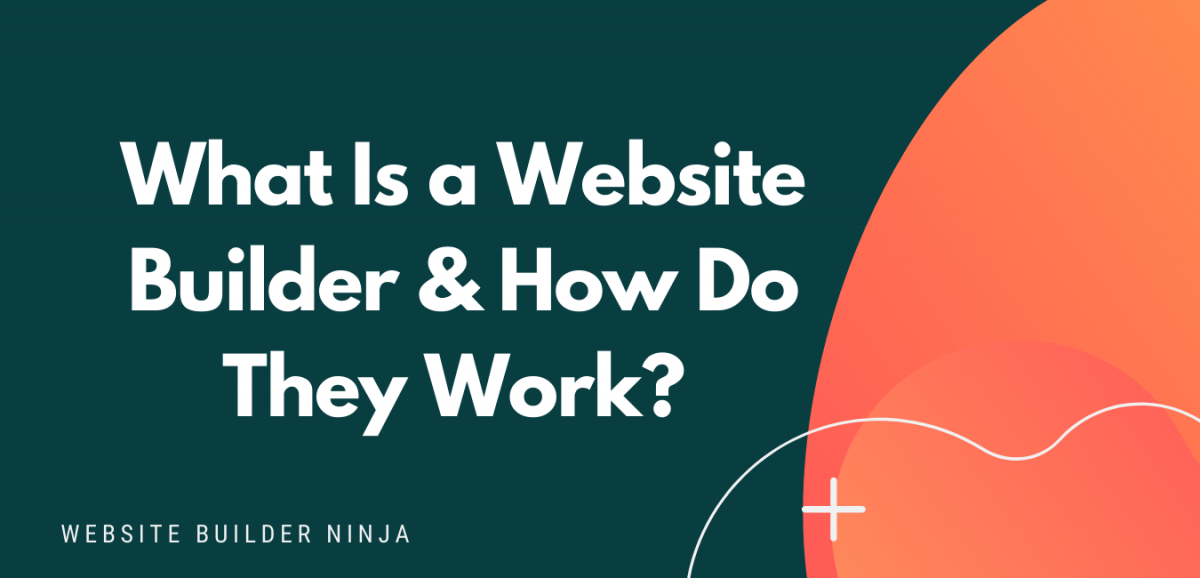
What is a website builder?
The simplest answer to the question of what is a website builder is that it’s a software programme that helps you to build a website without having to manually code anything. But, how do they work?
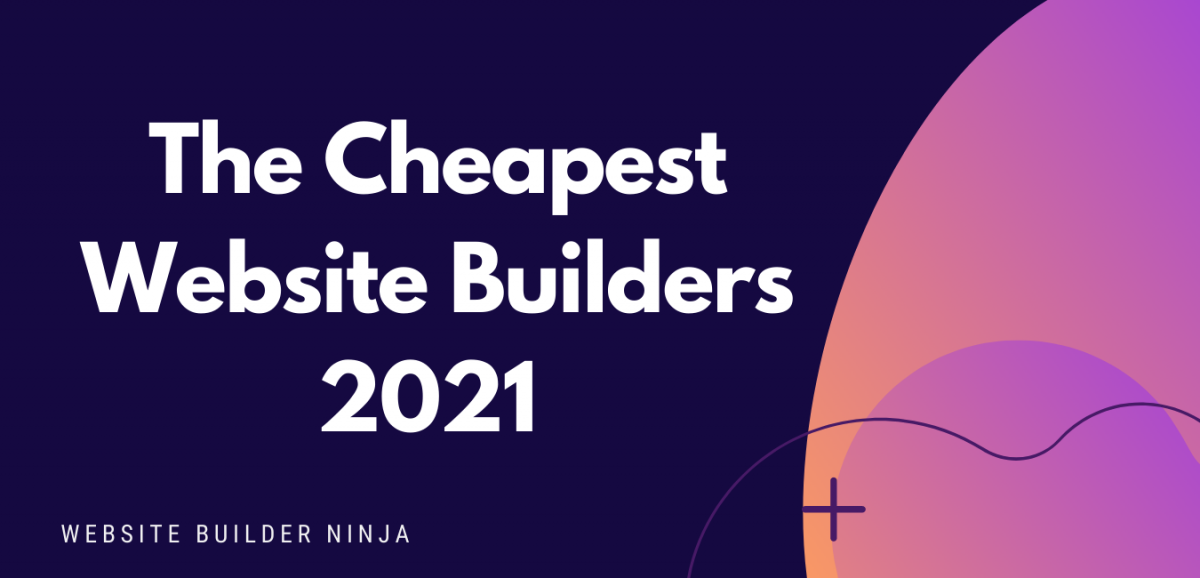
Cheapest Website Builder 2021
Building a website doesn’t have to cost the earth. We’ve pulled together a list of the cheapest website builders and ecommerce platforms to help you find an affordable option for your website. Not only are they the cheapest, but some of them are the best of the best…
